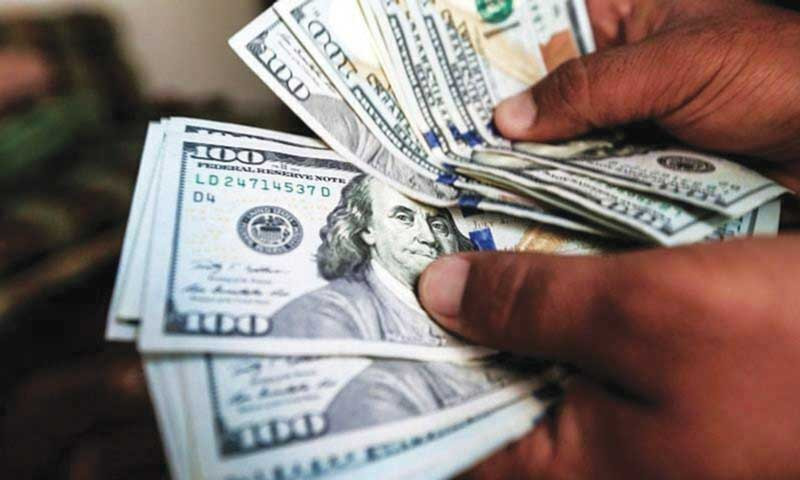
LAST week, I highlighted that the economy is rapidly re-dollarising as supported by the latest official statistics.
I further argued that dollarisation is two-handed and that Zimbabwe needs to go through dollarisation if it is to attain durable stability - a prerequisite for a mono-currency regime.
This week’s part 2 seeks to explain the intuition behind this view by separating time horizons into the medium term (3-5 years) and the long term (more than five years).
Medium-term horizon
Zimbabwe should embrace dollarisation of its economy in the short-to-medium term for the following reasons:
A leaf from economic history
Generally, flexible and progressive policymaking should accommodate lessons from history. A review of previous dollarisation reform cases shows that it is nearly permanent. Economic history also shows that forced de-dollarisation always backfires.
In addition, history lessons show that successful de-dollarisation can only be secured through the implementation of prudent market-driven policies and robust reforms. It is relatively easier to increase market uptake of government policy and reforms in a stable macro-economic environment.
- Drama around Ndebele king making a mockery of the throne
- Umkhathi Theatre Works on King Lobengula’s play
- Street mural exposes Zim’s divided society
- Council blames its woes on Zimdollar
Keep Reading
So, the guaranteed price stability from dollarisation makes it a defacto policy for the medium-term horizon. This gives room for dampening government policy lags -recognition, implementation and impact lags.
We are all dead in the long-run
Policy-making should not only be laser-focused on the economy neglecting the “human face”. Official statistics show that the Zimbabwean dollar (ZWL) erased over 80% of its value against the US dollar in 2022.
The pass-through effect of inflation is affecting business predictability and eroding the real value of disposable incomes and pensions. This is deepening poverty and widening societal inequalities. For instance, the World Bank estimates that over 40% of the total population was trapped in abject poverty in 2022.
Poverty undermines human development as it fuels all forms of discrimination, drug abuse, early marriages, crime rates and instability. Recently, the government has elevated its war on drug use, especially among unemployed youths, who have found solace in substance abuse.
This shows that there is a need to find a quick economic fix before the nation witnesses the derailment of the future aspiration of the youth. As I highlighted last week, dollarisation brings instant exchange rate and price stability, which can help attract private investment.
Quick results
Some economic commentators are arguing for other alternatives to dollarisation like the adoption of a currency board system. This system comprises a fixed exchange rate, backing requirement, legal commitment, and unrestricted convertibility.
It takes time to set up a currency board as it requires adequate political will. Just as the case with ongoing high-level structured public debt dialogues between the government and its creditors, a currency board also requires both commitment and uninterrupted implementation.
More so, the currency board operating guidelines must be spelled in legislation, an independent and competent panel must be established, and foreign exchange reserves mobilised. All this may consume time thus aggravating economic injury.
But dollarisation is quick as it does not always require a consensus among economic agents. Dollarisation can be by a de facto market process without an official decree. This gives businesses and workers an immediate cushion against exchange rate losses and clamps incessant price growth. So, while authorities are exploring long-term policy strategies, there must be an alternative for the short-to-medium term.
Investment promotion
While there are many initial conditions to be met to bolster foreign direct investment (FDI) inflows, such as stable politics, consistent policymaking and respect for property rights, the use of a stronger widely accepted currency like the United States dollar (USD) may partly attract foreign investors.
It can also promote locals to increase their investments knowing that the use of foreign currency can greatly insulate them from some major endogenous shocks. More so, the adoption of the USD in the medium term could increase forex liquidity in the official markets thus helping kick-start industrial re-tooling and importation of critical industrial raw materials.
Long-term horizon
As alluded to earlier, economic history shows that dollarisation is nearly permanent. To escape this vicious trap, de-dollarisation must be viewed as a process, not an event. I, therefore, submit that Zimbabwe will need more time and policy actions to run a mono-currency regime, that is, use the ZWL as sole legal tender. This is because USD is costly in the long term as briefly articulated hereunder.
Loss of autonomy
The perpetual use of USD is tantamount to the loss of the monetary policy-making arm of the government. Last week, I highlighted that this policy arm helps the government in the management of currency exchange rates and inflation as well as ensuring financial market stability.
As such, losing this policy arm will constrain the government's ability to promote local production and create decent jobs for citizens. Also, by using US monetary policy, the Zimbabwe government will lose seigniorage revenues it can accrue from the minting of coins and printing of banknotes. This revenue help governments worldwide fund national security, public services, and other development programmes.
Furthermore, dollarisation is unsustainable in the long term because it largely constrains authorities’ ability to respond to bank crises. Today’s world of rapid technological changes, climatic changes and rising geopolitical tensions makes financial markets more vulnerable to shocks than ever before.
So, to be able to effectively deal with such crises like liquidity crunch, authorities must be able to print money as needed. In short, dollarisation cripples the lender-of-last-resort function of the Reserve Bank of Zimbabwe.
Size of the economy
Zimbabwe is a small developing nation in sub-Saharan Africa while the United States is the world’s largest economy. Largely because of US economic dominance in global economic affairs, its stable currency faces a high global demand.
Therefore, it will be unsustainable for Zimbabwe to use the USD indefinitely as this renders it uncompetitive. A stronger USD makes Zimbabwean-made goods expensive for regional counterparts using their weak currencies while making foreign-made products cheap in the eyes of Zimbabweans. In the end, this may balloon the trade deficit leading to the closure of domestic factories and associated job losses.
Thwart national pride
Having a functional currency and competent industries with the ability to fulfil most domestic demand can be a source of national pride. This helps in boosting social cohesion thus increasing public participation and policy ownership.
However, using the USD for the long term may expose domestic firms to excessive foreign competition, dumping of foreign goods, and hostile takeovers. The crowding-out of domestic firms and over-dependence on foreign companies present a great national security risk.
Cash economy
Since RBZ will not be able to print USDs, adopting dollarisation without formal approval from the issuing country can lead to severe economic consequences. This type of dollarisation will be largely based on a cash economy — exchanging of real dollars in the market.
However, a cash economy renders monetary policies ineffective, leads to change shortages, and promotes tax evasion, money laundering, and other illicit transactions. All these forms of externalisation may result in acute forex shortages in the official markets and the creation of local USDs in the banking sector.
These local USDs become the basis for multiple exchange rates in the economy which could in turn incentivise excessive speculation and arbitrage.
Conclusion
Re-dollarisation of the economy was inevitable. The authorities initially followed a forced de-dollarisation path despite a clear lack of durable macro-economic stability. This pushed the USD to the epicentre again thereby completing a vicious cycle.
To permanently break this cycle, authorities should pursue long-term market-driven policies that ensure the sustainability of a mono-currency regime.
As such, next week the column will focus on the feasibility of recently announced government reforms to resolve the debt conundrum.
Sibanda is an economic analyst and researcher. He writes in his personal capacity. — [email protected] or Twitter: @bravon96






